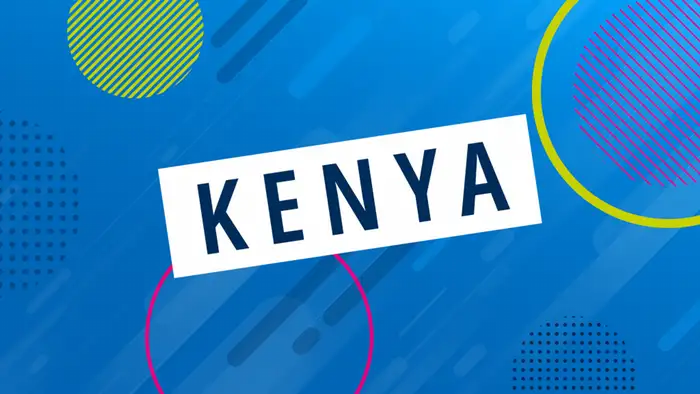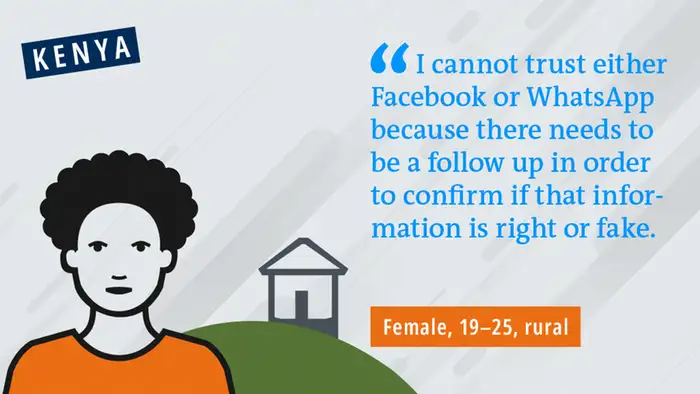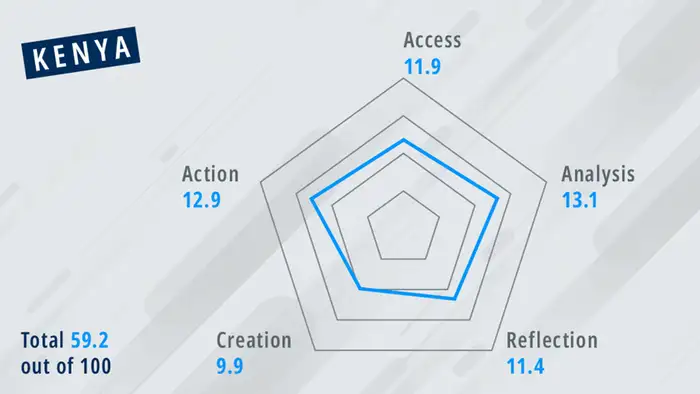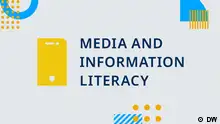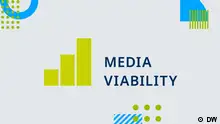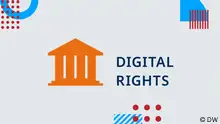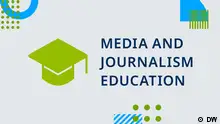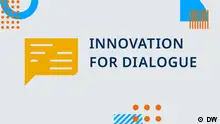MIL INDEX
Critical but less creative: Media and Information Literacy amongst Kenya’s youth
Kenya’s youngsters are going digital. Although thinking critically, they are not making the most of their opportunities.
The young generation in Kenya rejects disinformative and hateful communication. When asked for their opinion on these matters in a representative survey, a majority of 15-25-year-olds evaluated them as “not to be trusted” and “not funny”. This is one of the most important results of DW Akademie’s MIL INDEX study in Kenya. The finding is all the more relevant considering the fact that in the East African country, “propaganda and fake news is a big problem—it is everywhere, in the social media especially,” as Wallace Gichunge of the Kenyan Center for Media and Information Literacy pointed out in an interview conducted for the Study.
The country report presented here is based on the findings of the MIL INDEX study, for which a representative survey, eight focus groups, and eight expert interviews were conducted in Kenya between November 2018 and April 2019. The study focused on five Media and Information Literacy (MIL) skill sets: access, analysis, reflection, creation, and action.
The 15-25-year-old Kenyans displayed good skills when it came to analysis (13.1) and action (12.9) and moderate to good skills in terms of reflection (11.4) as well as access (11.9). Deficits were found mainly in the creation dimension (9.9). The total score amounted to 59.2 out of a possible 100.
Access
Taking a closer look at the different dimensions, young Kenyans access radio and television, and to a lesser extent go online, regularly. An important prerequisite for online access, the smartphone, is owned by almost three quarters of survey respondents. WhatsApp and Facebook are used by roughly half on a daily basis. Both Internet access and smartphone ownership are lower for rural, female, and adolescent segments of the population, highlighting the fact that access is more than just a matter of skills. It also depends on infrastructural, cultural, and economic factors. Kenya’s youth do not use printed press items very extensively. Considering the diversity of media used on a weekly basis and the diversity of media used for news and information, the MIL INDEX score is moderate to good (11.9 out of 20).
Analysis
The young Kenyan respondents are quite knowledgeable when it comes to background details concerning the Internet, journalism, and their right to freedom of expression. Over 80 % knew that their right to freedom of expression is part of the constitution, and more than 60 % could tell the difference between the Internet and Facebook, and define journalism. These results add up to a good MIL INDEX score for analytical skills (13.8 out of 20).
On the negative side, when asked to judge the Kenyan media landscape, respondents were found to be relatively uncritical, considering the levels of partisanship and corruption in the Kenyan media documented by independent studies and organizations (see African Media Barometer 2012, Election Observation Group 2017).
Reflection
There is a keen awareness amongst Kenya’s youth that adverse forms of communication like disinformation, cyberbullying, and hate speech are not be tolerated. The survey respondents are also quite adept at spotting news bias and censorship. Over 60 % condemned disinformation and cyberbullying and were able to identify news bias and censorship. Merely hate speech was dealt with more leniently, with only a relative majority of the respondents rejecting it. The MIL INDEX score for reflective skills is moderate to good (11.4 out of 20).
But the MIL INDEX survey also revealed that respondents were willing to tolerate news bias and censorship in certain situations. The focus groups documented frequent cases of young Kenyans becoming victims of online scams and showed that they only have a limited repertoire in coping with cyberbullying.
Creation
The lines between content producers and media users have become blurred in the digital age. More than 80 % of respondents reported using the basic skill of taking photos at least sometimes, around half made audio and video recordings, uploaded files, and updated their social media profiles at least sometimes, and almost a third wrote and published reports.
More than half of the respondents had also created a WhatsApp group before, while every fifth respondent claimed having created a blog or website. This resulted in a moderate MIL Index score (9.9 out of 20).
Action
Action entails putting one’s MIL skills into practice for the good of society or for one’s own benefit. When it comes to contributing to better levels of information in society, the young respondents are fairly good. More than two thirds share information with others and every sixth respondent comments on issues in public at least sometimes, and almost half report having taken part in a campaign for freedom of expression or access to information. The respondents’ MIL self-assessment is also quite positive. Around three quarters feel they can use media responsibly, analyze them critically, and reflect their own use of media. The proportion of respondents believing they are good at creating and publishing their own content is somewhat lower, at a bit more than 60 %. The MIL INDEX score for the sub-dimension of action is moderate to good (12.3 out of 20).
Conclusion
Based on the quantitative results, on average this age group has good skills when it comes to analysis and moderate to good scores in terms of action, access, and reflection. Deficits were found mainly in the creation department. The MIL INDEX score was 59.2 out of a possible 100, meaning young Kenyans achieved upper midrange results for Media and Information Literacy.
Methodological background
For each of the five dimensions (access, analysis, reflection, creation, action), survey respondents received a score ranging between 0 (= no skills whatsoever) and 20 (= highest level of skills) points. The scoring system measures how often certain skills are actually put into practice (access, creation, action) or tests the skills directly (analysis, reflection). Since citizens cannot permanently use media and information sources unless they are journalists or media workers, a perfect score of 100 for any country appears unrealistic—it is more about the relative performance across time, and in comparison to other countries, as well as being a tool for identifying deficits to be addressed in media development.
DW recommends
Downloads
- Date 22.10.2020
- Keywords MIL Index, Media and Information Literacy, Kenya, DW Akademie, #mediadev
- Feedback: Send us your feedback.
- Print Print this page
- Permalink https://p.dw.com/p/3jvFB
- Date 22.10.2020
- Keywords MIL Index, Media and Information Literacy, Kenya, DW Akademie, #mediadev
- Send us your feedback.
- Print Print this page
- Permalink https://p.dw.com/p/3jvFB

